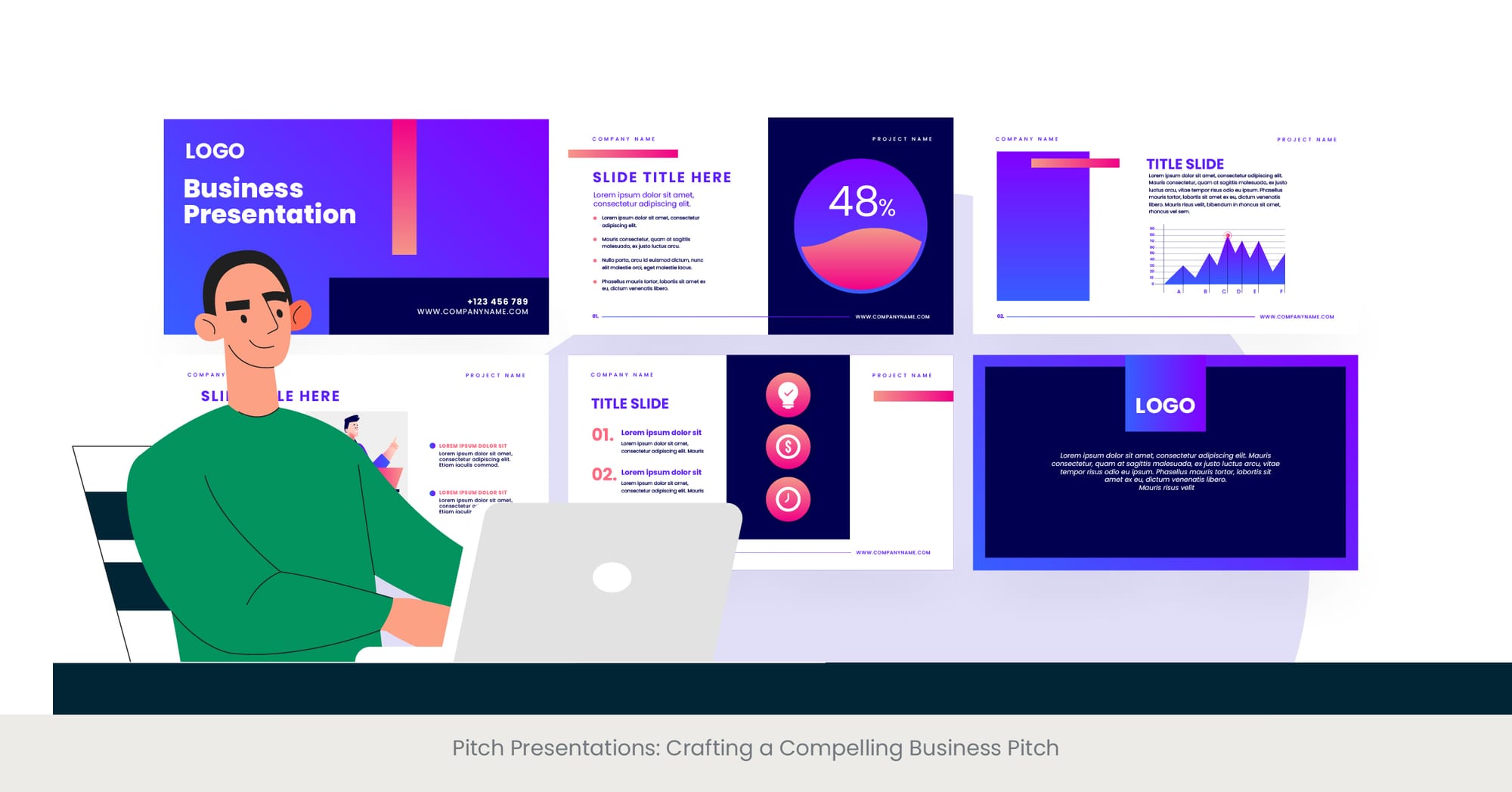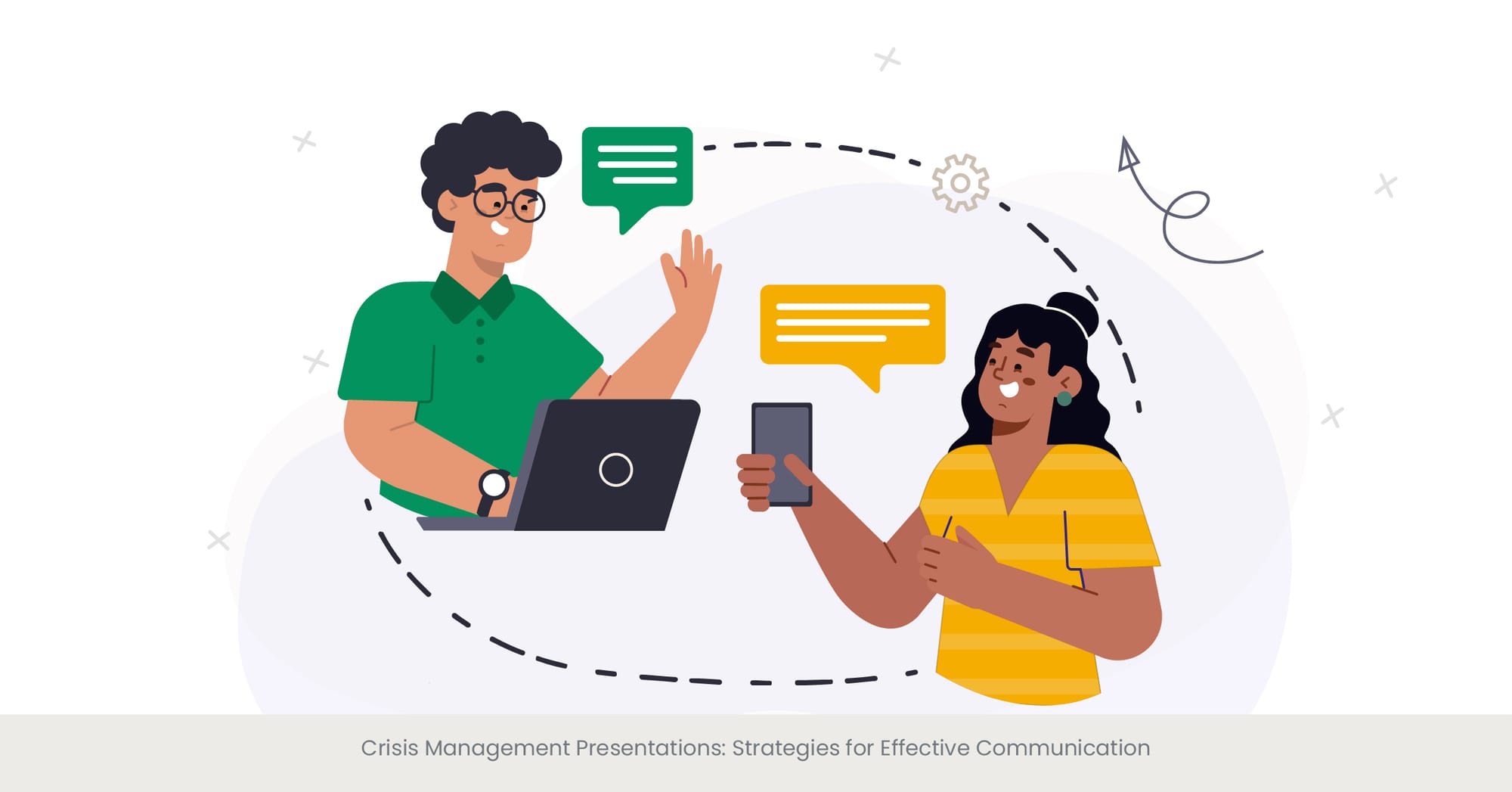
Educational Presentations: Strategies for Knowledge Transfer

Introduction to Educational Presentations
Educational presentations serve as a cornerstone in the realm of business presentations, aiming to facilitate knowledge transfer in a structured and effective manner. At their core, these presentations strive to not only inform but also to enrich the audience's understanding of a given topic. The very beginning of a successful business presentation in an educational context lays the groundwork for what is to come, emphasizing clarity, engagement, and the strategic use of visual aids to enhance learning. Crafting an introduction for a business presentation that captures the audience's attention from the outset is paramount, setting the stage for a compelling educational journey.
The concept of educational presentations dates back to the early days of corporate training and academic dissemination, where the goal was to share knowledge and insights in a manner that was both accessible and engaging. Over time, the strategies for knowledge transfer have evolved, incorporating advancements in presentation technology, such as PowerPoint presentations and other visual representation tools, to better cater to the learning preferences of diverse audiences. Presentation skills, especially in an educational setting, have become an invaluable asset, requiring presenters to master the art of delivering content that is both informative and captivating.
Real-world Applications and Examples

In today's dynamic business environment, educational presentations are utilized across a spectrum of scenarios, from onboarding new employees to disseminating research findings within professional communities. For instance, a company might create business presentations to train staff on new software, employing storytelling techniques and business-friendly humor to enhance retention and engagement. Another example could be a professional seminar where industry experts share insights using data-driven slides, engaging the audience with thought-provoking questions and facilitating a Q&A session to address concerns in real-time.
External References and Statistics
According to recent studies, presentations that employ a mix of visual aids, such as infographics and videos, can significantly improve retention rates among audiences, with some research suggesting an increase in information recall by up to 55% when visuals are used effectively. Furthermore, strategies like the "10-20-30 rule" for presentation slides—no more than 10 slides, lasting no longer than 20 minutes, and with a minimum font size of 30—have been advocated by experts like Guy Kawasaki, reinforcing the importance of simplicity and focus in educational presentations. The incorporation of these techniques not only validates the efficacy of well-structured educational presentations but also highlights the evolving landscape of business communication.
Persuasive Presentations: Techniques for Influence and Decision-Making

Crafting Persuasive Narratives
Persuasive presentations are a key element in the arsenal of business communication, designed to sway opinions, encourage decision-making, and drive action. These presentations go beyond the mere transmission of information; they are an art form that combines the power of argumentation with the subtle nuances of human psychology.
The introduction for a business presentation of this nature must immediately establish a connection with the audience, leveraging both logical and emotional appeals to create a compelling narrative. By integrating storytelling techniques and eye contact, presenters can build trust and rapport, setting the groundwork for persuasion.
Understanding the psychological underpinnings of persuasion is crucial for crafting presentations that resonate. This involves not only the content but also the delivery, where good presentation and skills come into play. The use of visual aids and simple language can help clarify complex arguments, while the strategic placement of key points throughout the presentation ensures the audience remains engaged and receptive. Historical examples, such as Steve Jobs' product launch presentations, underscore the effectiveness of combining data with storytelling to captivate and convince audiences.
Real-world Applications and Examples
In the realm of sales and marketing, persuasive presentations are often the linchpin in closing deals and winning over potential customers. A successful business presentation in this context might showcase the benefits of a product through customer testimonials and compelling visuals, addressing concerns and objections before they are even raised by the audience.
Another example is in the nonprofit sector, where organizations may use persuasive presentations to garner support and donations, illustrating the impact of contributions with real-life stories and statistical evidence to appeal to both the hearts and minds of potential donors.
External References and Statistics
Research by the Harvard Business Review highlights that presentations employing storytelling can increase persuasiveness by up to 35% compared to those that rely solely on statistics and facts. Additionally, incorporating elements such as "business-friendly humor" and "visual representation" not only aids in keeping the audience engaged but also plays a crucial role in retention and persuasion.
For instance, incorporating the "5 P's of powerful presentation" (Plan, Prepare, Practice, Present, and Post-Evaluate) as a framework can significantly enhance the effectiveness of persuasive presentations, ensuring that the message not only reaches the audience but also motivates them to act.
Informative Presentations: Strategies for Clarity and Understanding

The Essence of Informative Presentations
Informative presentations are fundamental in disseminating knowledge and providing clear, concise information to an audience. Unlike persuasive presentations, the primary goal here is to educate and inform, not to influence opinions or decision-making. The introduction for a business presentation in this category should set the stage with a clear outline of what the audience can expect to learn.
Effective use of visual aids and a structured approach can significantly enhance the delivery, making complex information more accessible. A successful presentation hinges on the presenter's ability to break down information into digestible segments, ensuring the audience remains engaged and can easily grasp the key points.
At the heart of every informative presentation is the need to convey data and facts accurately and engagingly. This requires a balance between detailed content and simplicity to avoid overwhelming the audience. Historical context can add depth to the information being presented, providing a richer understanding of the subject matter.
For instance, in a business context, discussing the evolution of digital marketing strategies can give audience members a comprehensive view of how techniques have changed over time and why certain methods are effective today.
Real-world Applications and Examples
In the corporate world, informative presentations often take the form of market analysis reports, product updates, or industry trends briefings. For example, a presentation on the latest cybersecurity threats would include current data on types of attacks, affected industries, and prevention strategies, supported by visuals like graphs and charts for clarity. Similarly, a company might use an informative presentation to explain a new company policy, ensuring that senior management and employees understand the rationale behind the change and how it will be implemented.
External References and Statistics
According to the National Association of Colleges and Employers, presentations that effectively use visual aids can be up to 43% more persuasive than those without. This statistic underscores the importance of incorporating visuals into informative presentations to aid understanding and retention.
Additionally, a study published in the Journal of Business Communication found that audience members are more likely to remember and understand information when it is presented in a clear, structured manner with visual support. These findings highlight the critical role of design and organization in creating effective informative presentations.
Sales Presentations: Navigating the Sales Funnel Effectively

Introduction to Sales Presentations
Sales presentations are dynamic tools designed to guide potential customers through the sales funnel, from initial awareness to the final decision to purchase. The essence of a successful sales presentation lies in its ability to connect with the audience on a personal level, addressing their needs and demonstrating how the product or service offers the perfect solution.
A compelling introduction for a business presentation in the sales context sets the tone, highlighting key benefits and unique selling points early on to capture the audience's full attention spans and interest.
Effective sales presentations go beyond showcasing product features; they tell a story that resonates with the audience, highlighting how the product or service can solve specific problems or improve their situation. This requires a deep understanding of the target audience, including their pain points, desires, and decision-making processes.
Utilizing visual aids and storytelling techniques, presenters can create a narrative that not only informs but also engages and persuades the audience, making the case visually appealing, for why their offering is the best choice.
Real-world Applications and Examples
In practice, sales presentations are often tailored to the audience's sector, needs, and the complexity of the product or service. For instance, a presentation to potential investors for a tech startup would focus on innovation, market potential, and return on investment, supported by data-driven slides and testimonials from early users. On the other hand, a direct-to-consumer product presentation might lean more on visual storytelling and emotional appeal, using before-and-after scenarios and customer testimonials to illustrate the product's impact.
External References and Statistics
Research indicates that presentations incorporating customer testimonials and case studies can increase conversion rates by up to 80%. This is a testament to the power of real-world evidence in reinforcing the value proposition of a product or service. Additionally, the use of visual storytelling and personalized content tailored to the audience's specific needs and challenges can significantly enhance the effectiveness of sales presentations, making them a key tool in any successful sales strategy.
Pitch Presentations: Crafting a Compelling Business Pitch

Mastering the Art of the Pitch
Pitch presentations are a critical element in the journey of securing investment, partnerships, or stakeholder buy-in. These presentations require a delicate balance of information, persuasion, and engagement to effectively communicate the value proposition of a business idea or venture. A powerful introduction for a business presentation in this context grabs the audience's attention, setting the stage for a narrative that is both compelling and concise. The goal is to ignite interest and convince the audience of the potential for success and profitability.
The structure of a pitch presentation is pivotal. It should succinctly address what the business is, the problem it solves, how it differentiates from competitors, and the market opportunity. This requires not only a clear understanding of the business model but also an ability to present it in a way that is accessible and engaging.
Utilizing visual aids, such as slides with key data, bullet points and graphics, can help to clarify complex concepts and keep the audience engaged. Moreover, a successful pitch presentation weaves in storytelling elements, connecting the audience emotionally to the vision and journey of the enterprise.
Illustrations from the Field
Real-world examples of successful pitch presentations often include elements that directly address potential investor concerns, such as market validation, financial projections, and growth strategies. For instance, a startup seeking venture capital might highlight its customer acquisition cost, lifetime value, and traction through engaging stories about customer experiences or testimonials. Similarly, a pitch for a new product within an established company might focus on innovation, demonstrating through prototypes or success stories how it will capture new markets or solve unaddressed customer needs.
Validation through Research and Data
Statistics and external references play a crucial role in bolstering the credibility of a pitch. For example, citing industry growth rates, competitor analysis, and third-party market research can provide a solid foundation for the business case. Studies have shown that pitches backed by robust data and clear financial projections are more likely to secure funding. Incorporating feedback from market tests or pilot programs can also serve as compelling evidence of concept validation and market demand.
Training Presentations: Developing Effective Training Programs

The Role of Training Presentations
Training presentations are an essential tool in the development of skills and knowledge within an organization. These presentations aim to educate employees on new processes, technologies, or methodologies, ensuring they have the necessary information to perform their roles effectively.
An impactful introduction for a business presentation in the training context sets the expectation, outlining the objectives and benefits of the session. Utilizing a combination of visual aids, interactive elements, and clear, concise explanations can significantly enhance the learning experience, making the information more accessible and engaging for participants.
Effective training presentations are grounded in adult learning principles, recognizing that adults have a wealth of experiences they bring to the learning process. This understanding informs the design of the presentation, ensuring it is relevant, practical, and applicable to the learners' daily tasks. Incorporating elements such as real-life scenarios, hands-on exercises, and group discussions can facilitate a deeper understanding and retention of the material. Additionally, breaking down complex information into manageable segments and utilizing visual representations can aid in clarity and comprehension.
Application in Real-world Scenarios
In practice, training presentations vary widely depending on the subject matter and the audience. For instance, a presentation on customer service skills might include role-playing activities that allow participants to practice and receive feedback in a safe environment. Meanwhile, a technical training session on new software might utilize screen captures and live demonstrations to guide learners through the application's features and functionalities. These practical applications reinforce learning and enable participants to visualize how they can apply the knowledge in their roles.
Supporting Evidence and Best Practices
Research indicates that training programs incorporating interactive elements and practical applications lead to higher engagement and retention rates among participants. A study published in the "Journal of Workplace Learning" found that employees who participated in training sessions with interactive components were 75% more likely to apply what they learned on the job. Furthermore, incorporating feedback mechanisms, such as surveys or assessments at the end of the session, can provide valuable insights for continuous improvement, ensuring the training remains effective and aligned with organizational goals.
Internal Communication Presentations: Engaging Your Team

Enhancing Internal Communications Through Presentations
Internal communication presentations play a vital role in keeping team members informed, aligned, and motivated. These presentations can cover a wide range of topics, from company updates and strategic initiatives to team achievements and individual recognitions. Starting with a business presentation introduction that clearly outlines the purpose and goals of the session can immediately engage the audience.
Employing a mix of storytelling, visual aids, and interactive elements not only maintains interest but also fosters a sense of community and shared purpose among team members.
The effectiveness of internal communication presentations hinges on their ability to convey key messages in a clear, concise, and engaging manner. This involves strategic planning around content design, ensuring that the information is relevant and accessible to all employees, regardless of their role within the organization.
Incorporating elements such as business-friendly humor, personal stories, and team success stories can personalize the experience, making the content more relatable and impactful. Furthermore, presentations should encourage open dialogue, inviting questions and feedback to promote a two-way communication channel.
Real-world Implementation and Impact
In practice, internal communication presentations have been successfully used to navigate through organizational changes, celebrate milestones, and foster a positive work culture. For example, a company undergoing a major rebranding effort might use these presentations to explain the reasons behind the change, outline the new brand identity, and discuss how employees can contribute to its success. Another example could be a quarterly town hall meeting where leadership shares company performance, updates on strategic initiatives, and recognizes outstanding employee contributions, thereby reinforcing transparency and appreciation within the workforce.
Evidence-Based Approaches and Outcomes
Studies have shown that effective internal communication is directly linked to enhanced employee engagement, satisfaction, and productivity. According to research published in the "International Journal of Business Communication," companies with effective internal communication strategies report 47% higher returns to shareholders, underscoring the business value of engaging internal presentations. Additionally, incorporating feedback mechanisms and leveraging tools like employee engagement surveys can provide actionable insights, allowing organizations to continuously refine their communication strategies for maximum impact.
Crisis Management Presentations: Strategies for Effective Communication

Navigating Crises with Effective Presentations
Crisis management presentations are crucial in times of organizational stress, serving as a linchpin for transparent, timely, and reassuring communication. These presentations aim to inform stakeholders about the crisis, the steps being taken to manage it, and the anticipated outcomes.
Beginning with a strong business presentation introduction that acknowledges the situation and outlines the agenda can set a constructive tone for the dialogue. It's essential to balance factual information with a tone of empathy and assurance, demonstrating leadership's commitment to addressing the situation and safeguarding stakeholder interests.
The content of a crisis management presentation must be carefully crafted to address the key concerns of all stakeholders. This involves presenting a clear understanding of the crisis, its impacts, and the immediate actions taken. It's critical to convey transparency and honesty, avoiding speculation and ensuring all information shared is accurate and up to date. Utilizing visual aids to illustrate crisis management plans or timelines can help in clarifying complex information, making it easier for the audience to follow along and understand the steps being taken.
Examples of Effective Crisis Management
Real-world instances of effective crisis management often highlight the importance of swift, coordinated communication efforts. For example, during a product recall, a company might use presentations to communicate with employees, customers, and regulators, detailing the recall process, safety measures, and customer support initiatives. Another example could be a financial downturn, where a firm uses internal presentations to discuss cost-cutting measures, operational adjustments, and strategies for financial recovery, aiming to maintain employee morale and investor confidence.
Research and Best Practices in Crisis Communication
The research underscores the importance of preparedness and proactive communication in crisis management. Studies indicate that organizations with predefined crisis communication plans and training are better positioned to manage crises effectively. According to the "Journal of Business Ethics," transparent communication during a crisis can significantly mitigate negative perceptions and preserve trust among stakeholders. Moreover, post-crisis evaluations and incorporating feedback into future crisis management plans are essential for continuous improvement and resilience building.
Investor Presentations: Securing Funding with Impactful Pitches

Crafting Investor Presentations for Maximum Impact
Investor presentations are key to unlocking potential funding and support for new ventures or growth initiatives. These presentations require a strategic blend of compelling storytelling, clear financial projections, and a strong value proposition to persuade potential investors of the opportunity at hand.
Starting with an impactful business presentation introduction that clearly articulates the business idea and its market potential can immediately capture investor interest. The effectiveness of these presentations hinges on the presenter's ability to convey not only the vision and innovation behind the venture but also its feasibility and scalability through concrete data and analysis.
The core of an investor presentation lies in its structure, which typically encompasses the problem being addressed, the proposed solution, market analysis, business model, go-to-market strategy, competitive landscape, financials, and the team behind the venture. Each section must be meticulously prepared to answer potential investor questions and concerns, using visual aids like charts, graphs, and infographics to enhance understanding and retention. A successful investor presentation goes beyond the numbers; it connects on a personal level, showcasing the passion, commitment, and expertise of the team.
Real-world Examples and Success Stories
Historically, some of the most successful funding rounds have been secured through presentations that skillfully balance detailed business insights with engaging narratives. For example, tech startups often share user growth metrics, engagement statistics, and revenue models to demonstrate traction and scalability. They might also include case studies or testimonials to validate market demand and product effectiveness. Meanwhile, ventures in more traditional sectors could emphasize market size, regulatory advantages, or unique partnerships as key differentiators.
Supporting Data and Industry Insights
Evidence from the venture capital industry suggests that investor presentations backed by robust market research, clear financial projections, and a credible exit strategy are more likely to succeed. According to a study in the "Journal of Business Venturing," presentations that concisely address potential risks and mitigation strategies while highlighting unique competitive advantages significantly increase the likelihood of investment. Furthermore, incorporating feedback from previous pitches to refine the presentation can demonstrate adaptability and responsiveness to market feedback, further enhancing credibility.
Celebratory Presentations: Recognizing Achievements and Milestones

The Importance of Celebration in the Workplace
Celebratory presentations are a powerful tool for acknowledging team achievements, individual accomplishments, and significant company milestones. These events serve not only as a form of recognition but also as a means to reinforce a positive organizational culture, boost morale, and encourage continued excellence.
A captivating presentation or business presentation introduction sets the stage for celebration, highlighting the significance of the achievements and the collective effort involved. Through these presentations, organizations can express gratitude, foster a sense of belonging, and inspire others to strive for excellence.
Creating a memorable celebratory presentation involves careful planning and creativity. The content should reflect the achievements being honored, whether they pertain to project completions, sales milestones, service anniversaries, or company-wide accomplishments. Employing visual aids such as photos, videos, and infographics can add a personal touch and evoke emotions, making the celebration more impactful. Additionally, incorporating storytelling techniques can help to contextualize the achievements within the larger narrative of the organization's journey and values.
Examples of Effective Celebratory Presentations
In practice, celebratory presentations can take many forms, from informal team gatherings to elaborate company-wide events. For instance, a company might host an annual awards ceremony to recognize outstanding employee contributions, using a combination of speeches, multimedia presentations, and personalized awards to honor the recipients. Another example could be a presentation marking a company's anniversary, where the history, key milestones, and future vision are shared through a mix of speeches, video retrospectives, and guest speakers, creating a sense of pride and anticipation for the future.
Best Practices and Impact
Research and best practices in organizational behavior highlight the importance of recognition in driving employee engagement and satisfaction. Celebratory presentations that are sincere, inclusive, and well-executed can have a profound impact on the organizational climate, enhancing loyalty, productivity, and team cohesion. According to a study in the "Journal of Management," organizations that regularly recognize and celebrate achievements are more likely to retain top talent and achieve long-term success.
FAQs
1. How should I start an introduction to a presentation?
Begin great presentation by capturing your audience's attention with a relevant quote, statistic, or question. Then, introduce your topic and explain why it's important to your audience.
2. How do you introduce yourself in a business presentation example?
"Good morning, my name is [Your Name], and I'm the [Your Position] at [Your Company]. I have [X years] of experience in [Your Field], and today, I'm excited to share with you [Brief Overview of Your Presentation]."
3. What do you say at the beginning point of a presentation?
Start with a warm greeting, introduce yourself, provide a brief overview of your topic, and outline what the audience can expect to learn or achieve by the end of your presentation.
4. How do I start my own business presentation?
Identify the main goal of your presentation and your target audience. Begin with a strong opening statement that introduces the topic and its relevance, followed by an agenda or outline of what you will cover.
5. What is a good introduction for a business presentation?
A good introduction clearly states the topic, its relevance to the audience, and what they will gain from the presentation. It should engage the audience's interest and set the tone for the presentation.
6. How do you start an introduction for a presentation?
Begin with an engaging element relevant to your topic (story, question, fact), then transition into a clear statement of the presentation's purpose and what the audience will learn.
7. How do you introduce yourself in a conference room or business presentation example?
"I'm [Name], [Position] at [Company], specializing in [Specialization]. Today, I'll be discussing [Topic], drawing on my [X years] experience in [Field]."
8. What do you say at the beginning of a presentation?
Open with an engaging statement or question to grab attention, briefly introduce the topic, and outline the key points you'll cover, setting clear expectations for your audience.
9. What is the 5 5 5 rule for better presentation?
This rule suggests using no more than 5 words per line, 5 lines per slide, and having no more than 5 text-heavy slides in a row to keep crucial points in your presentation clear and engaging.
10. What are the 5 P's of powerful presentation?
Plan, Prepare, Practice, Present, and Post-Evaluate. This framework emphasizes the importance of thorough preparation and continuous improvement for effective presentations.



%20(1).jpg)
%20(1).jpg)


